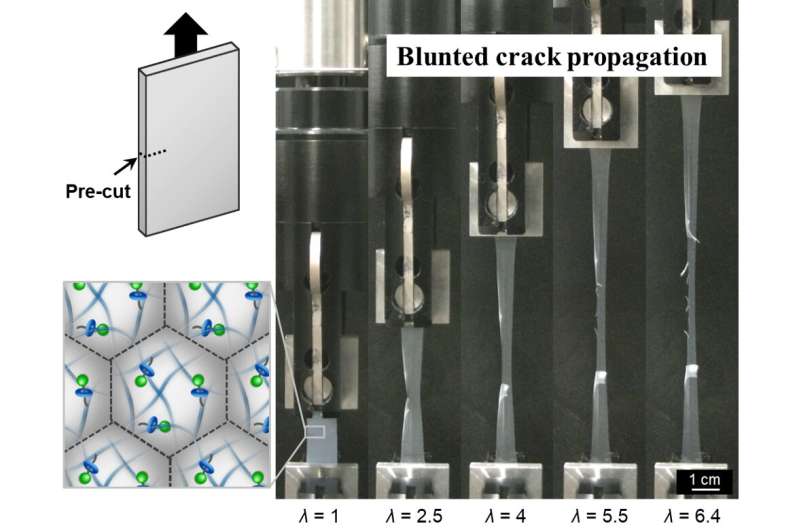This article has been reviewed according to Science X's editorial process and policies. Editors have highlighted the following attributes while ensuring the content's credibility:
fact-checked
peer-reviewed publication
proofread
Toward crack-resistant nanoparticle-based latex films

Synthetic polymer materials, such as plastics and rubbers, have become ubiquitous in our daily lives. It is, therefore, essential to ensure that they are safe, durable, and sustainable. This is especially true for synthetic latex films, which are widely used in packaging, biomedicine, and electronics.
But what exactly are synthetic latex films? Simply put, they are a type of nanoparticle-based films that are produced by drying out a mixture of polymer nanoparticles and water. As the solvent evaporates, the nanoparticles become more packed until finally the interactions between polymer chains at the boundaries of nanoparticles create a coherent film.
Unfortunately, the latex films produced this way are weak. In most cases, organic solvents and fillers must be added to the initial mixture to improve the mechanical properties of the final product. These additives are not only expensive but also harmful to the environment.
Fortunately, a team of researchers from Japan, led by Associate Professor Daisuke Suzuki from Shinshu University, recently developed an innovative way to produce tough and crack-resistant elastic nanoparticle-based latex films without using such additives. Their work, published in the journal Langmuir, included contributions from Yuma Sasaki from Shinshu University and Professor Toshikazu Takata from Hiroshima University.
The key to their approach was a novel molecular structure known as rotaxane, which comprises two main components—a ring-like molecule and a linear "axle" molecule. The ring-like molecule is threaded through the axle molecule, which becomes mechanically trapped thereafter owing to the shape of the axle terminations.
The researchers leveraged this interlocking mechanism in rotaxane by making the ring-like molecule chemically bind to one polymer chain and the axle molecule to another chain. Next, they prepared mixtures of water and polymer nanoparticles through standard ultrasonication and subsequent polymerization that, in turn, were used to produce latex films. The stretching experiments performed on these films revealed that the rotaxane-based strategy resulted in some remarkable properties.
"In contrast to conventional nanoparticle-based elastic polymers, the latex films composed of the rotaxane-crosslinked nanoparticles exhibited unusual crack propagation behavior," explains Dr. Suzuki. "The direction of crack propagation changed from being parallel to the crack to one perpendicular to the crack, resulting in an increased tear resistance."
The new approach to making latex films offers many advantages over conventional methods. Most importantly, no toxic additives are needed to achieve reasonable film toughness. Moreover, since only a tiny amount of rotaxane is needed, the total weight of the films can be kept low while preserving flexibility. The proposed latex films are sustainable as well.
"They are degradable and can be easily disassembled into individual nanoparticles by simply soaking them in an environmentally friendly organic solvent, such as an aqueous ethanol solution," says Dr. Suzuki. "These nanoparticles can then form a film again upon evaporation of the solution. The findings of this research can thus help create highly durable and recyclable materials."
Overall, the team expects their work to broaden the scope for the design of new polymer films without additives. Such materials could thus be made biocompatible, with potential applications in biotechnology and medicine in addition to packaging, industrial coatings, and adhesives.
More information: Yuma Sasaki et al, Nanoparticle-Based Tough Polymers with Crack-Propagation Resistance, Langmuir (2023). DOI: 10.1021/acs.langmuir.3c01226
Journal information: Langmuir
Provided by Shinshu University





















